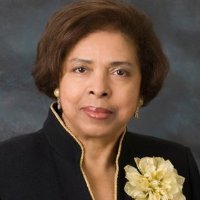
Human Trafficking is Finally Coming Out of the Dark
By Dr. E. Faye Williams, Esq.
Trice Edney News Wire
Until recently, we didn’t hear a lot about Human Trafficking. Now, we’re finding that we should’ve been noticing it as more and more children are involved. For many of us the tragedy in Nigeria where hundreds of young women were stolen to become wives of Boko Haram members caught our attention, and many of us participated in the Bring Back Our Girlscampaign. Some are still in captivity.
What many of us didn’t know is that human trafficking not just in labor, but often via prostitution, is a serious problem in the United States. Human Trafficking is a form of slavery, often where mostly women and girls are held against their will and are forced to work or have sex for money. It’s often going on right next door to some of us.
Young women immigrants, as well as young women who are US citizens with few or no options in life are the prey of traffickers. The vulnerability is often tied to economics, but not always. It can be psychological, low self-esteem or fear.
Many of the victims once in the business are too afraid to escape because of violence threatened or perpetrated against them. Sometimes human trafficking begins because of poverty and a feeling of hopelessness or that nobody cares about the victims other than the person who guides them into trafficking. Many of the younger victims have aged out of foster care with nowhere to go. They suddenly find themselves on the street, and are picked up by a trafficker who offers them a place to live, food and enough luxuries to make them feel they are “special”.
Human trafficking is a modern-day form of slavery involving the illegal trade of people for exploitation or commercial gain. Every year, millions of men, women, and children are trafficked. It is estimated that human trafficking is a $32 billion per year industry, second only to drug trafficking as the most profitable form of transnational crime.
It’s a hidden crime, as victims rarely come forward to seek help because of language barriers, lack of skills, fear of the traffickers or fear of law enforcement.
Traffickers use many methods to claim victims. They use force, fraud, drugs and coercion to lure victims and force them into labor or commercial sexual exploitation. They look for the vulnerable. Many of the victims are so traumatized by what happens to them that even when it appears to others they could get away from the trafficker, they stay.
Among the ways traffickers entrap victims: claiming to love them, keeping them away from their families, offering them good jobs, taking away their identification documents and isolating them from others.
According to a United Nations report, trafficking generates $9.5 billion annually in the US alone! The Justice Department says about 300,000 children are at risk of being prostituted in the US, with the average age of entry for a child victim being 13-14 years old. DOJ tells us a pimp makes $150-200,000 per child who’s forced to have sex over 20 times a day! That’s serious! That’s the reason more of us must become involved in saving our children.
The DOJ identified the top 20 cities where trafficking is a serious problem: Houston
• El Paso
• Los Angeles
• Atlanta
• Chicago
• Charlotte
• Miami
• Las Vegas
• New York
• Long Island
• New Orleans
• Washington, D.C.
• Philadelphia
• Phoenix
• Richmond
• San Diego• San Francisco
• St Louis
• Seattle
• Tampa.
If you’re looking for a way to make a difference in your community, and you live in one of the cities mentioned, consider taking on this issue by becoming a mentor to a woman or girl and offering them better options.
E. Faye Williams is President of the National Congress of Black Women www.nationalcongressbw.org.








